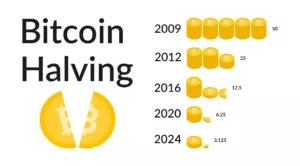Are you interested in day trading stocks or options? If so, you may have heard of the Pattern Day Trader (PDT) designation. The PDT rule was implemented by the Financial Industry Regulatory Authority (FINRA) to protect individual investors from the risks of day trading. In this article, we'll take a closer look at the PDT designation, why it was implemented, the consequences of violating it, and how to avoid it.
What is PDT Designation?
The PDT designation is a regulation that limits the number of day trades an individual can make within a five-day period. According to FINRA's rule, a pattern day trader is anyone who executes four or more day trades within five business days using a margin account. If you're classified as a pattern day trader, you must maintain a minimum account balance of $25,000, either in cash or securities, to continue day trading. Falling below this amount will restrict you from executing day trades until the account balance is restored to the required minimum.
Why was PDT Designation implemented?
The PDT rule was implemented to protect individual investors from the risks of day trading. Day trading is a high-risk investment strategy that involves buying and selling securities within a single trading day. The PDT rule aims to prevent individuals with limited funds from engaging in day trading, which can result in significant financial losses. The rule also ensures that day traders have sufficient funds to cover any losses that may occur.
What are the consequences of violating PDT Designation?
If you violate the PDT rule, your brokerage firm may issue a margin call, requiring you to deposit additional funds to meet the minimum account balance of $25,000. Failing to meet the margin call may result in your brokerage firm liquidating your positions to cover the shortfall, causing significant losses. Additionally, if you're classified as a pattern day trader and fail to maintain the minimum account balance of $25,000, you will be restricted from executing day trades until the account balance is restored to the required minimum.
How to avoid PDT Designation?
To avoid being classified as a pattern day trader, you can limit the number of day trades you execute within a five-day period. One way to do this is to use a cash account, which doesn't allow you to trade on margin. Alternatively, you can spread your trades over multiple accounts to avoid exceeding the four-day trade limit within a five-day period. However, this strategy can be complex and may not be suitable for all traders.
Conclusion
In conclusion, the Pattern Day Trader designation is an important regulation that helps protect individual investors from the risks of day trading. As a day trader, it's essential to be aware of the PDT rule and take steps to comply with its requirements to avoid potentially significant financial losses. By following the guidelines outlined in this article, you can reduce your risk and increase your chances of success in day trading. Click here to learn more about PDT Designation



